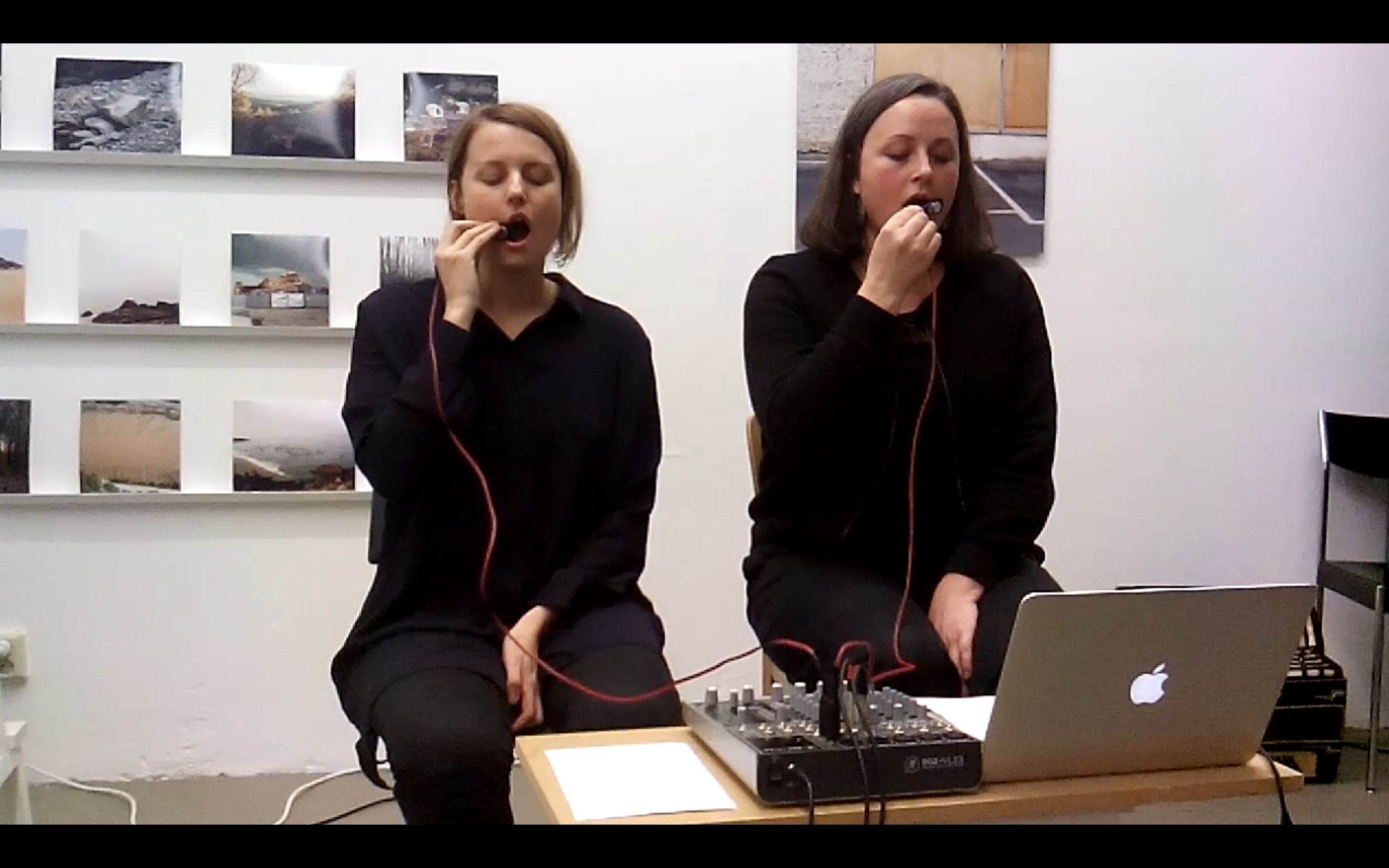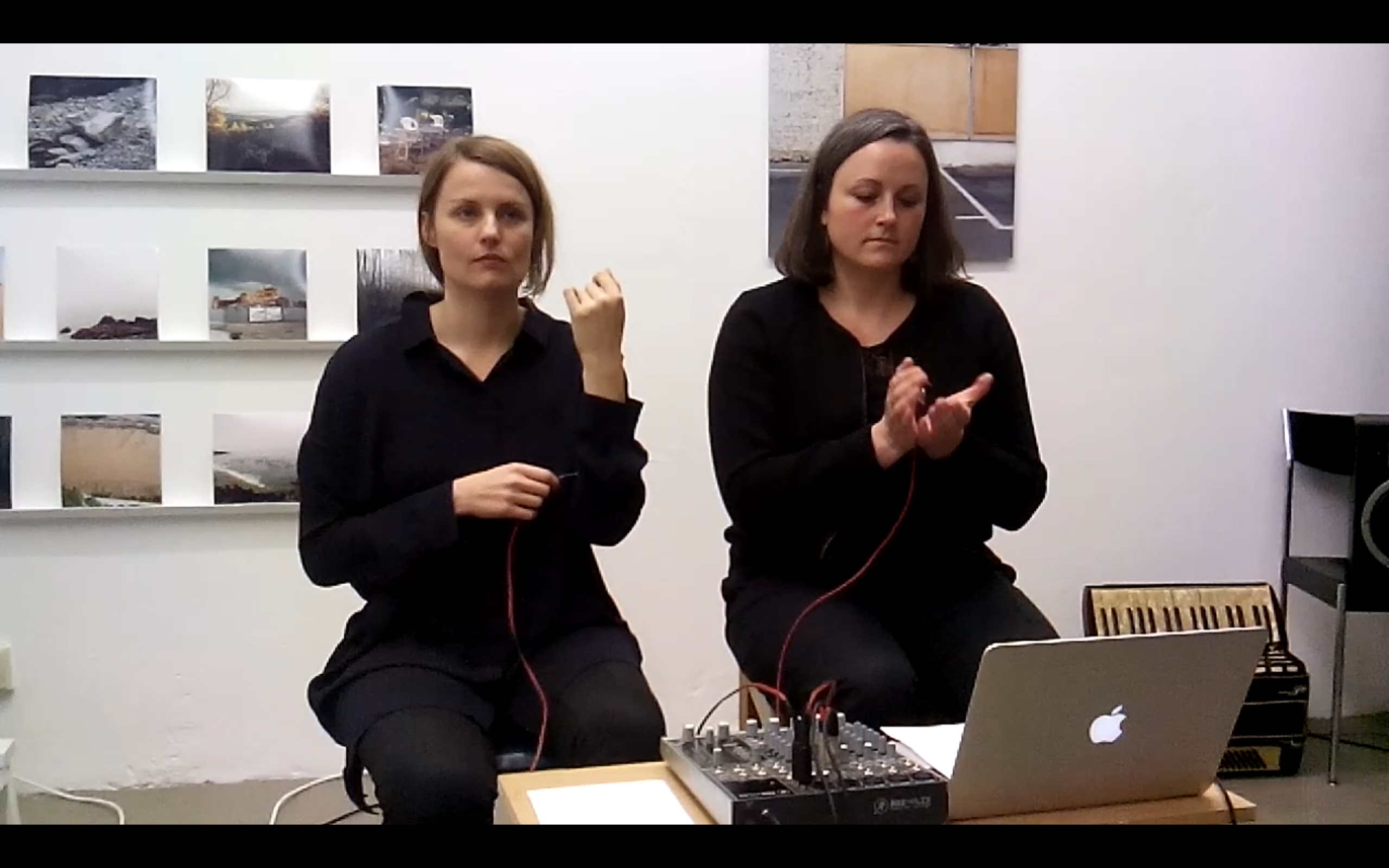Accent
Using extensive transcriptions, close listening and improvisatory techniques, Accent is a duet, conversation and mutual impersonation. It is a composition carefully transposed from hours of casual conversation, serious discussion, drawn-out efforts at explanation, tetchy disagreements and myriad attempts - both lazy and sincere - to impersonate one another's accents.
The performance is a loose reconstruction, a formal experiment, a stupid game. We imitate imitations, talk about talking, and mispronounce words. These uncontrollable voice-sounds test the borderline between the intentional and the accidental, opening onto questions of what can and cannot be notated, scored, or repeated with exactitude.
As we hear ourselves again, filtered through one another, what emerges is a genuine confusion between imitation and quotation, explanation and demonstration, music and signal, friendship and collaboration, speech and song. Accent is an ongoing collaboration with Emma Bennett, previously known as Lark.
A Superficial Way
A newer-ish collaboration with Emma Bennett, which arose from a Q-O2 residency in Brussels, which took place during a heatwave. Retreating to galleries and museums for reprieve, we devised this work during a visit to the Musée des Instruments de Musique. Originally titled, “the superficial front-facing way of putting it out there.”
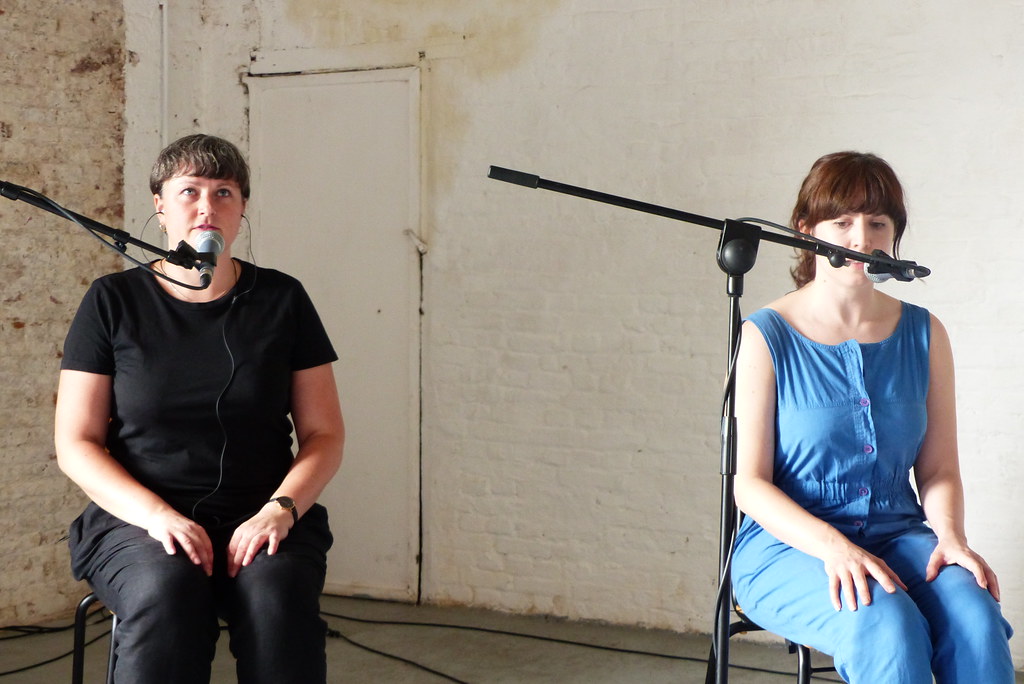
Performed at Q-O2, 8 August 2019.
Made into a video work because Covid.
Video by Emma, audio edit by me.
A Few Pointers
A Few Pointers is a dialogue-based practice with artist Leena Kangaskoski. It is a platform which allows us to explore new ways of putting images and sound together, whether we film and record together or in separate locations, we first decide on methods for devising the work.

Animated Machine was created as a response to the National Theatre production of Frankenstein directed by Danny Boyle, filmed by Leena Kangaskoski and Ana Minguez. Later on, Leena and Ana developed the topic of life and death further, and the trajectory of a life as a journey, the body as mere flesh like Frankenstein's monster, the cold, the isolation, and electricity. The result was an amalgamation of symbols and sounds of a very abstract nature.
Animated Machine
Since then, we have collaborated on film, performance, and installation works, which have been exhibited at the National Theatre, Barbican, and Chisenhale Dance Space in London, and Direktorinhaus and Strahler in Berlin.
In 2012, with choreographer Nathan Johnston, we were commissioned to create a show in an underground water world in Harstad, for the Festspillene i Nord-Norge (North Norway Festival). Water Walk was an interdisciplinary performance work for three percussionists, dancer, moving image, and lighting. The piece takes place in an underground water world, across two pool areas, in a swimming complex built into the side of a mountain. In honour of John Cage’s ‘Water Walk,’ performed by NorthArc and dancer Matt Lackford at Grottebadet, Harstad Norway, 28 June 2012, Festspillene i Nord-Norge.
WHEN I SIT, YOU SCREAM
Part Two
really
Part Three
Stille
Part One
Herr Hermann and Sophia Bumm-Bumm
Herr Hermann and Sophia Bumm-Bumm
Recorded, filmed and edited in Berlin, November 2014
Exhibited at Galerie Pleiku, Berlin.
Exhibited at Galerie Pleiku, Berlin.
Part Two
really
Recorded and filmed separately, Berlin and Helsinki, January 2015.
Exhibited at Strahler, Berlin, as part of 5//5: Fleck.
Exhibited at Strahler, Berlin, as part of 5//5: Fleck.
Part Three
Stille
Recorded in London, filmed in Helsinki, May 2015.
Effect regardless of distance
Recorded in Berlin, filmed in Helsinki, June 2015.
Conversation
Conversation traces the boundaries between musical composition and performance, dance, spoken word and sculpture, and uses elements from these disciplines in order to create a piece that is at once a live musical composition, a gestural performance piece and a sonic artwork.
Conversation is a performance piece for two people, small homemade loudspeakers and tape, and is a collaboration with Rebecca Lane.
DUO
DUO is the resulting work of a collaboration with player, composer, and researcher of ngā taonga puoro, Al Fraser. We met up in his workshop/studio and experimented with qualities of sounds, their shapes, and the incidental sounds that occur when beginning/ending/during playing. Drawn from wee films made while devising musical material, then put back together side by side as a sort of duo, using a random duration generator. Commissioned by Music Group with funds from Creative New Zealand.
Recorded and filmed in Te Whanganui-a-Tara, March 2021.
earpiece
an installationThe idea for earpiece came out of the need to block my ears in a busy city, when music is performed too loud, or when sounds are generally just too screechy.
I've often experimented with "hearing my ears" and was interested in exploring how this could be made into an interactive installation that playfully investigates how we listen and creates a piece where the participant becomes the instrument, performer and audience all at once.
I worked with Tamarin to develop a visual language that would show participants how to hear their own ears as they interact with the piece.
The video was projected onto one wall of a darkened studio and the sound played at full volume through speakers placed at ear height.
What the speakers play is half of the musical composition. The rest of the sound world is created through audience members following these animated prompts in the video as they listen and watch, supplementing the soundtrack with new sounds and acoustic effects made by moving their fingertips and hands in order to block, unblock, scratch, swipe, tap and cover their ears.
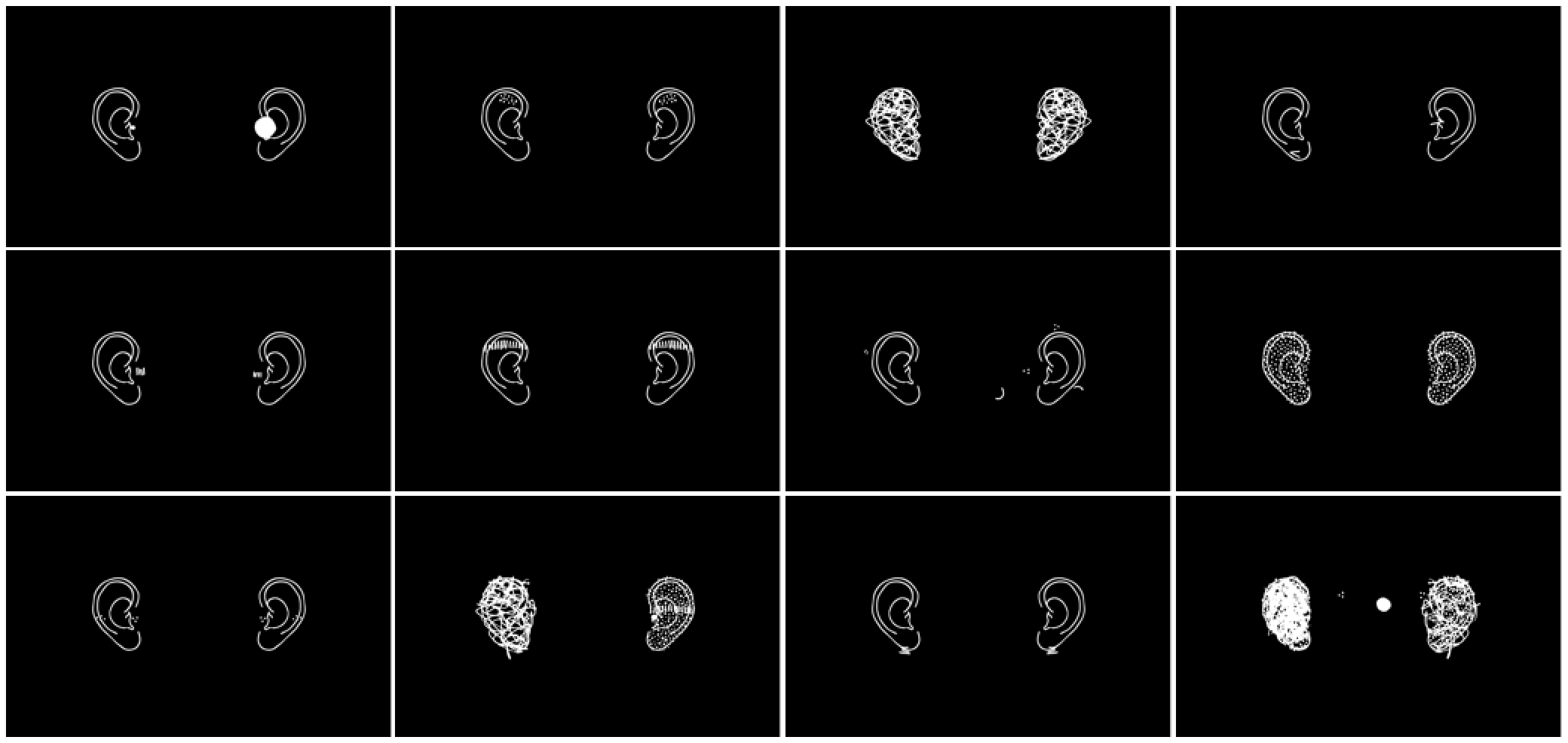
Collaboration with Tamarin Norwood.
Premiered at Wellcome's Hubbub Late Spectacular, 4 September 2015.
Premiered at Wellcome's Hubbub Late Spectacular, 4 September 2015.
face to face at the time on the time
Conversations across distance and technology, bouncing back together. A string quartet reimagined. I was less than a week into a big move home to Aotearoa in 2018 and had phone/video calls individually with four players from Phaedra Ensemble—Chihiro Ono, Phil Granell, Richard Jones, and Sergio Serra. We chatted around time zones, music, work, travel, and keeping in touch, which I recorded, re-edited, transcribed, and scored for them to perform together in London at VOX06, their final concert in the VOX series, which explored ideas of place, nationhood and belonging through works inspired by the human voice.

Pictured (L–R): Chihiro Ono, Phil Granell, Sergio Serra at VOX06.
Performed at Juju's Bar and Stage, London, 5 July 2018.
Photograph by Dimitri Djuric.
FLAT OUT Collective
In 2010 I founded FLAT OUT Collective, a collaborative group which brings together the shared concerns of four artists, whose backgrounds span visual art, music, performance and dance. Via ongoing dialogue, and a series of collectively-curated performance nights, our aim was to co-create a body of ambitious and cutting-edge performance works that interrogate the borders between disciplines. We put on two shows at Chisenhale Dance Space, 2011–2012: UNSUNG and UNSEEN. With Emma Bennett, Nathan Johnston, Leena Kangaskoski, and friends.
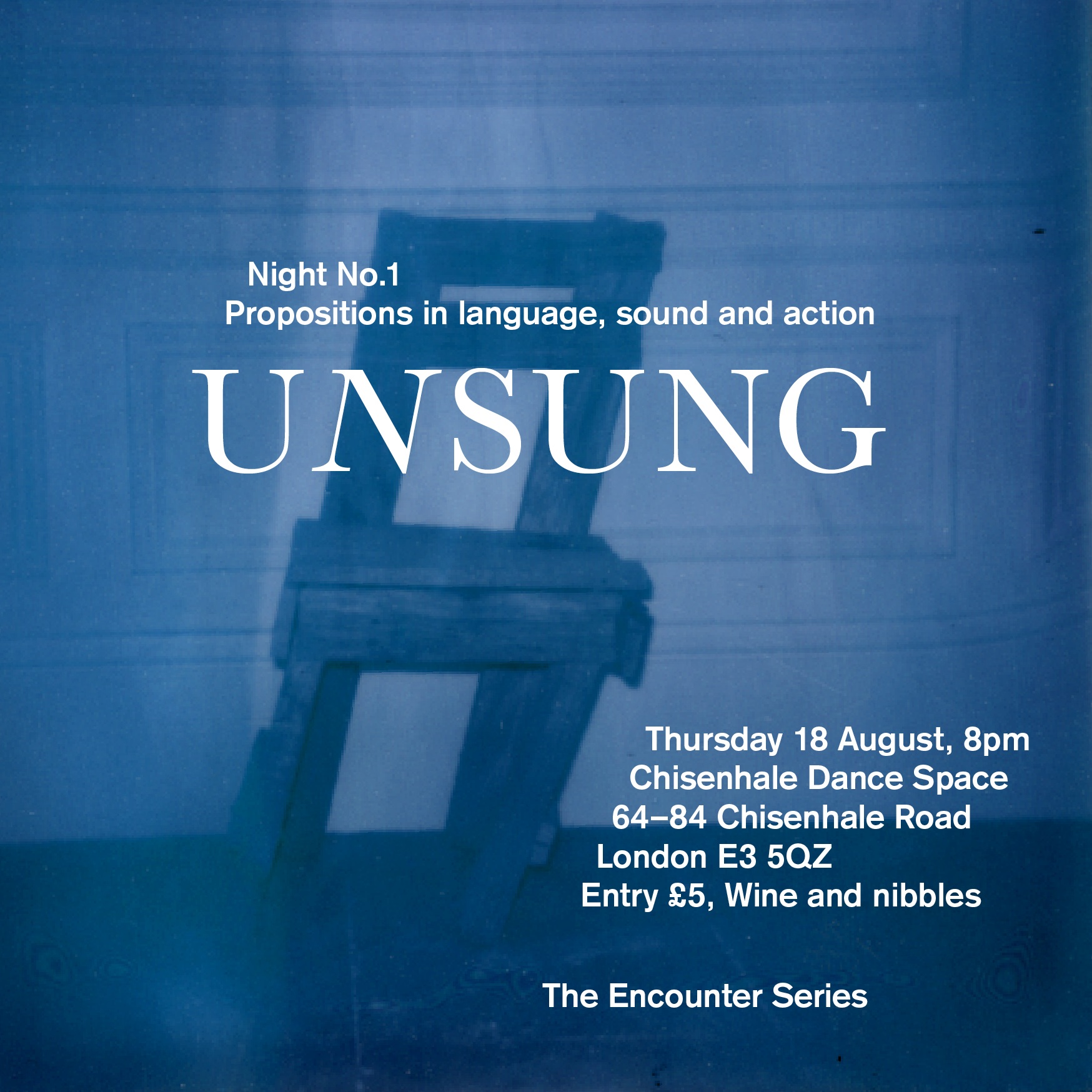

In Air
We attempted to find a collaborative model that blurred the boundaries between 'writing', 'composing' and 'performing'. We worked closely together, considering compositional concepts as well as Adam's process of interpretation and memorisation, in order to discover a common language.
We focussed on the sounds in the mouth: the relationship between a note and a word; music and language; singing and speech. We tested vowel transferral techniques and the discrepancies in our accents, thinking of vowels as the body of the sound, the body of the word, and consonants as the stoppage of air by the teeth, the tongue, and the lips, and then measuring out the extensions and stoppages.
We explored ideas of sound and sense: sounds as shaped things in air and the music as a figural space giving form to dispersed verbal objects. Sometimes these facilitate a kind of amnesia—the listener forgets the beginning of a word (the consonant which bounds and shapes the vowel) and the vowel morphs and is funnelled into a different word-ending, so sung-sound hovers between two kinds of sense.
Spatial positioning of the text became an important facet of the work and we laid the words out spatially on the page and formulated rules for interpreting this text notation into music notation.
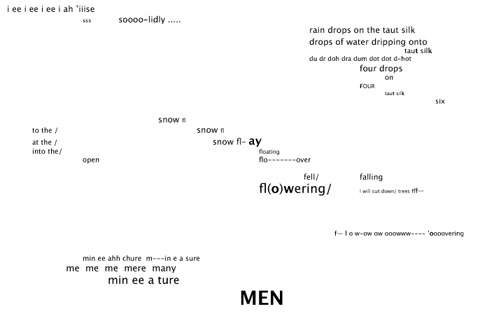
Excerpt of the text score.
Voiceworks collaboration with Emma Bennett and Adam Crockatt.
Performed at Wigmore Hall, 20 May 2010.
Quintet
Quintet emerged out of a desire to create a working environment that enabled music and dance to progress equally in tandem. This allowed us to have an organic process of collaboration, often pushing and pulling in different ways, adding stresses and creating freedoms. Dancers contributed to the sound world and musicians to moving in the space.
Intrigued by the concept of imposing musical notions onto dance and “translating” them into movement, we had to figure out a way for dancers and musicians to create togetherness and separateness through shifting sound worlds, states, and energies.
Improvisation played a significant role in our process of composition, initially to spark ideas and generate material through the habits of the dancers and musicians, then in the progression of assigned tasks based on ideas of action and reaction, relationship and dialogue.
Collaboration with Nathan Johnston.
Performed at Robin Howard Theatre, The Place, 25 / 26 March 2010.
Sanctuary
an experimental documentary short, original scoreWhat do apes do when they’ve retired from lives as lab animals, circus performers and pets? How does their new state of rest relate to the myths and realities of the rural Welsh town they have retired to? A new documentary by Philipp Haueis, Noah Hutton, and Natacha Mendes explores these questions.
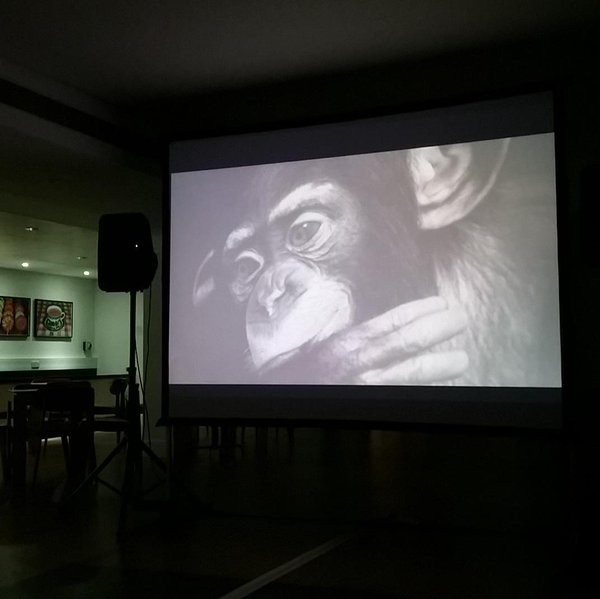
Hubbub was an international team of scientists, humanists, artists, clinicians, public health experts, broadcasters and public engagement professionals. For two years, we explored the dynamics of rest, noise, tumult, activity and work, as they operate in mental health, neuroscience, the arts and the everyday. We were based in London as the first residents of The Hub at Wellcome Collection from October 2014 to July 2016.

Premiered at Wellcome's Hubbub Late Spectacular, 4 September 2015.
Sit, Sit
Sit, Sit was a one-hour show of everyday actions framed as music. We curated performances by composers from around the world, plus a new piece by us, Second Company (with Elliot Vaughan).
From the rhythmicised, highly tactile, gestural elements of Winnie Huang's Tentacles, to James O'Callaghan's ode to books, a "proposition" by Alison Knowles, and Marcus Jackson's employment of the seemingly obnoxious referee's whistle as an expression of detailed beauty and careful delicacy, Sit, Sit is a show that contemplates the banal and uncovers delight.
In our own work, co-created through casual and philosophical conversation, interrogatory devising methods, and rigorous, detailed composition, we involve speech/song, movement/dance, gesture/theatre as musical materiality, and explore concepts of distance and communication. Comprised of various attempts to bridge a distance, our efforts will be clear: between us is a horizon, and this is the music of that horizon.
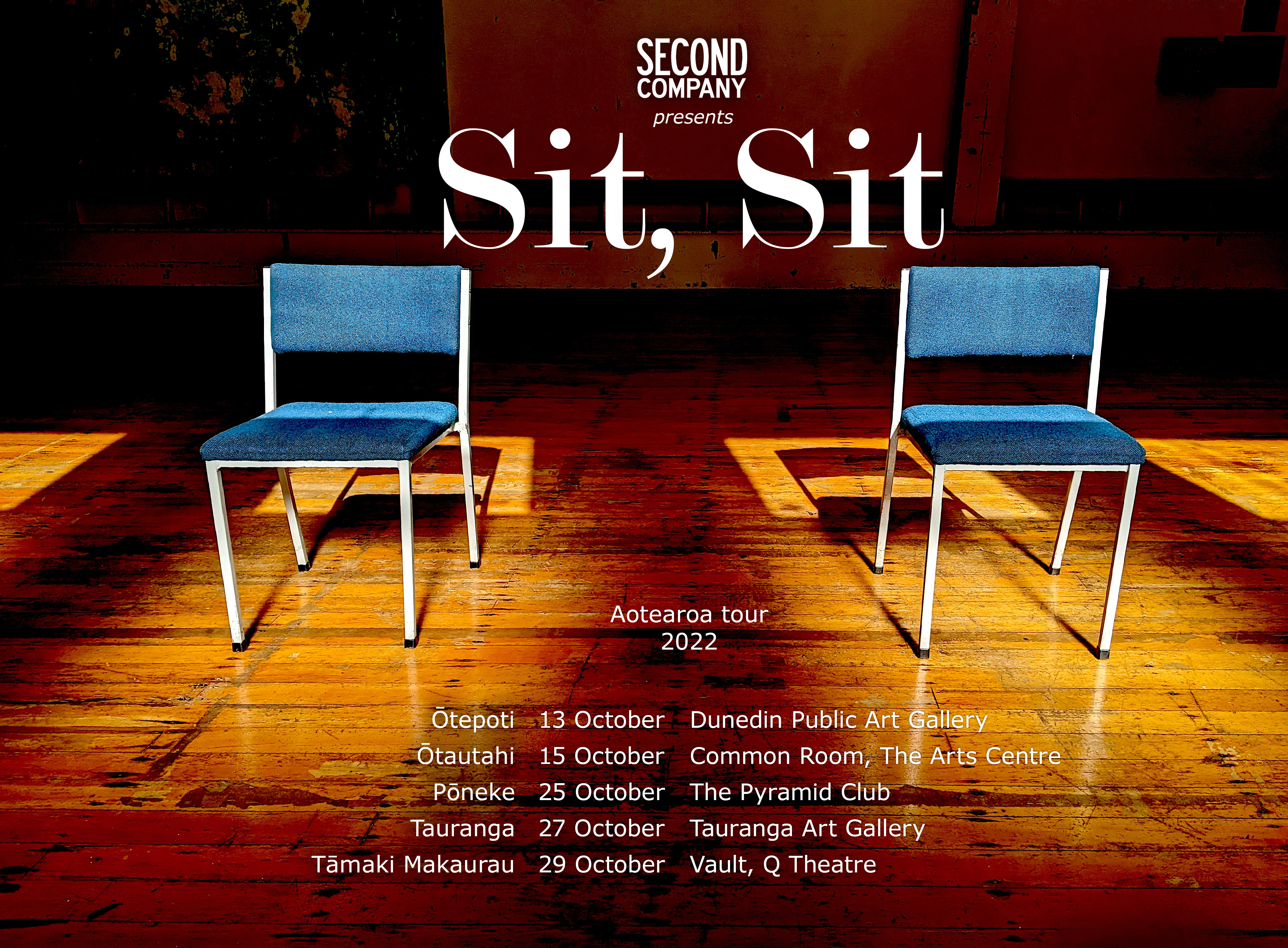
Stone Barn [Fossil Poetry]
Prompted by the theme of memory, I set a memorisation task for each of us—Bastard Assignments’ Timothy Cape, Edward Henderson, Caitlin Rowley and Josh Spear, and myself. We spent a day taking turns going into the next room and memorising a different text each (randomly assigned).
We each had five minutes to memorise it and then recorded what we could remember on our phones. We listened back to the recordings, the hesitations, fumblings, mumblings, and celebrated when we got it right!
I took the recordings and re-edited the material (each player kept their own voice), and transcribed them into a text score.
After a few hours rehearsal a few days later, we were on our way to the venue, walking along and chatting, and Ed said, it’s so hard to tell if we’re still performing, we can’t “get out of it.” [An original line from the original Lark. — Too true.]
A BBC / Bastard Assignments commission.
 Pictured (L–R): Caitlin Rowley, Josh Spear, Edward Henderson, me, Timothy Cape.
Pictured (L–R): Caitlin Rowley, Josh Spear, Edward Henderson, me, Timothy Cape.Performed at Topophobia, 12 October 2017.
Susceptible Chambers
If music can be thought of as meaningful time, then Antonia and Jessie's literal musical playground also creates a meaningful space.
—Curator Amadeus Julian Regucera, from “The Discipline of Play”
Susceptible Chambers was an EMPAC-commissioned performance, which draws lines between the worlds of sound art, handcrafts, and experimental theater. It begins with the re-construction of a simple microphone.
Musicians have historically augmented familiar musical instruments with alternative materials to change their, and the audience’s, relationship to that object from a sonic and cultural standpoint. By designing and building specially-crafted objects, and experimenting with instrumental expansion, we can hear these materials interacting with one another—and experience the possibilities of a completely new sonic landscape, which can be discovered by playing with (a) particular combination/s of materials.
Developed during a series of residencies, we laid the groundwork for an audio-visual performance that was both whimsical and rigorously executed. Composed from manifold permutations of “extended” microphones, we experiment with different microphone filters and casings as well as speakers, light, and color arrangements.
Susceptible Chambers collects technologies from bygone eras—pulley systems, pianolas, needlepoint, sodium vapor lamps—and places them in conversation with bespoke, handmade and electronic objects. This production draws the audience into an unusual, idiosyncratic, and playful sonic and visual world, experimenting with and challenging generally accepted practices of today’s electronic music, and contemporary music more broadly.

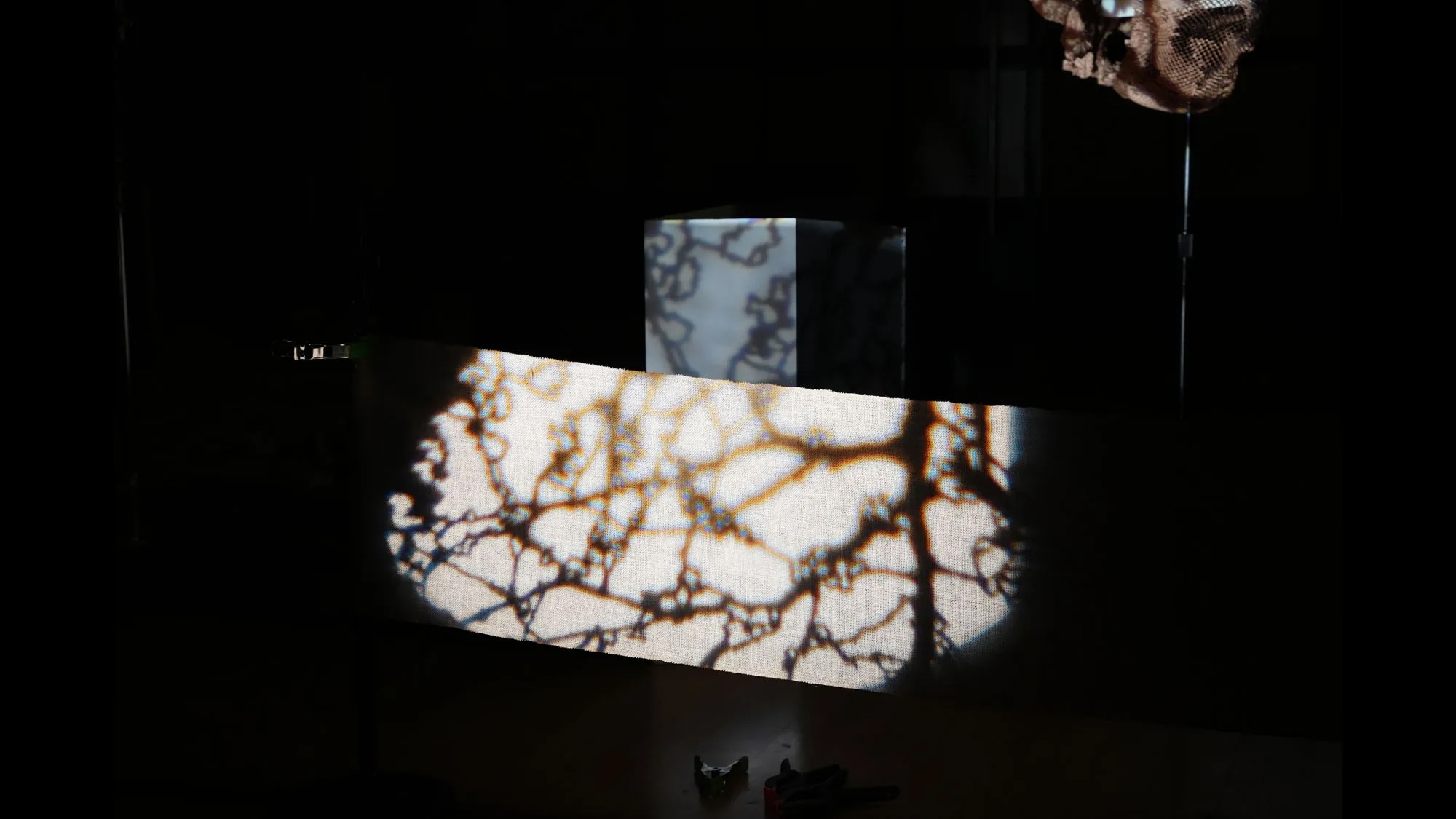
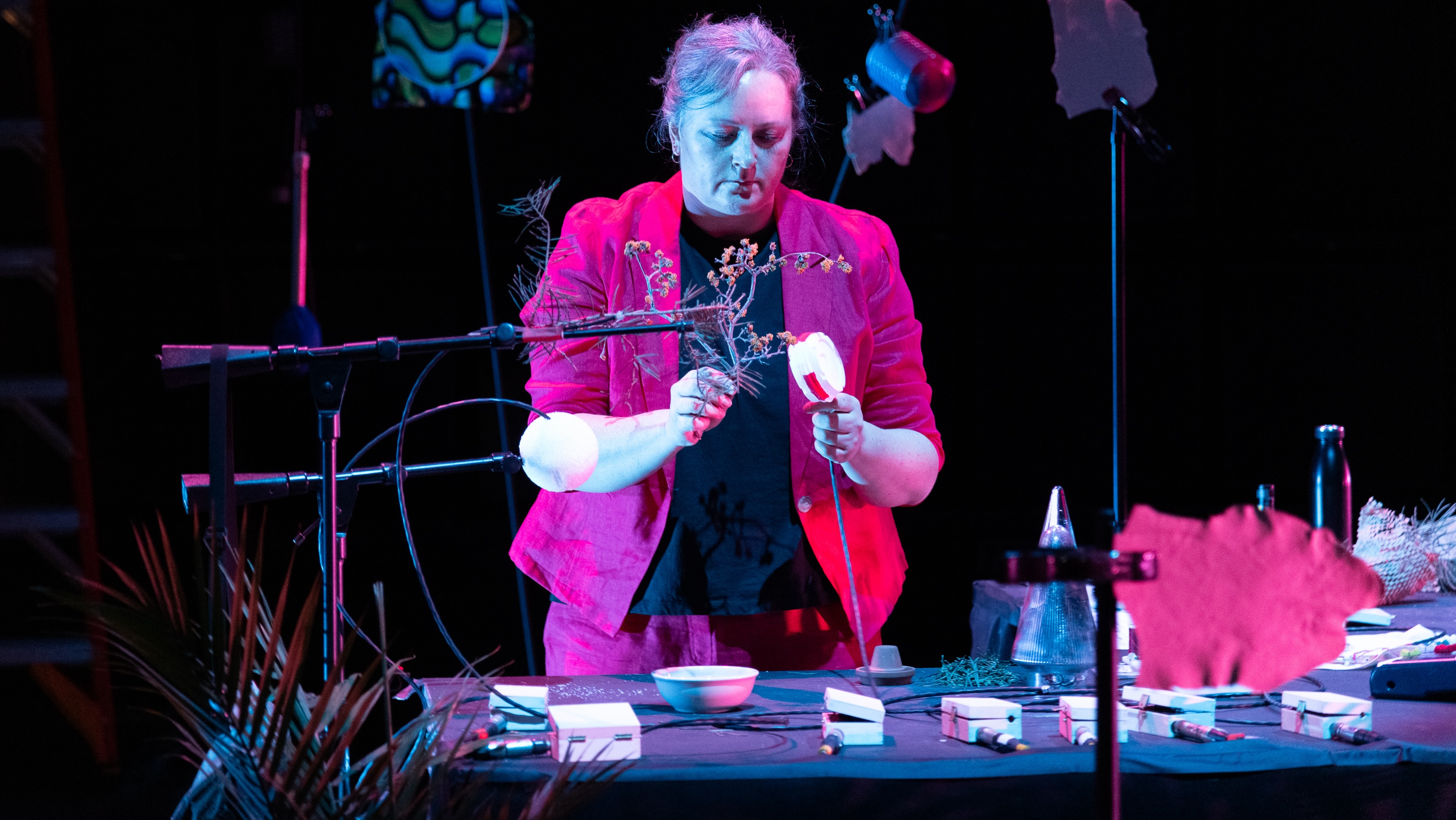
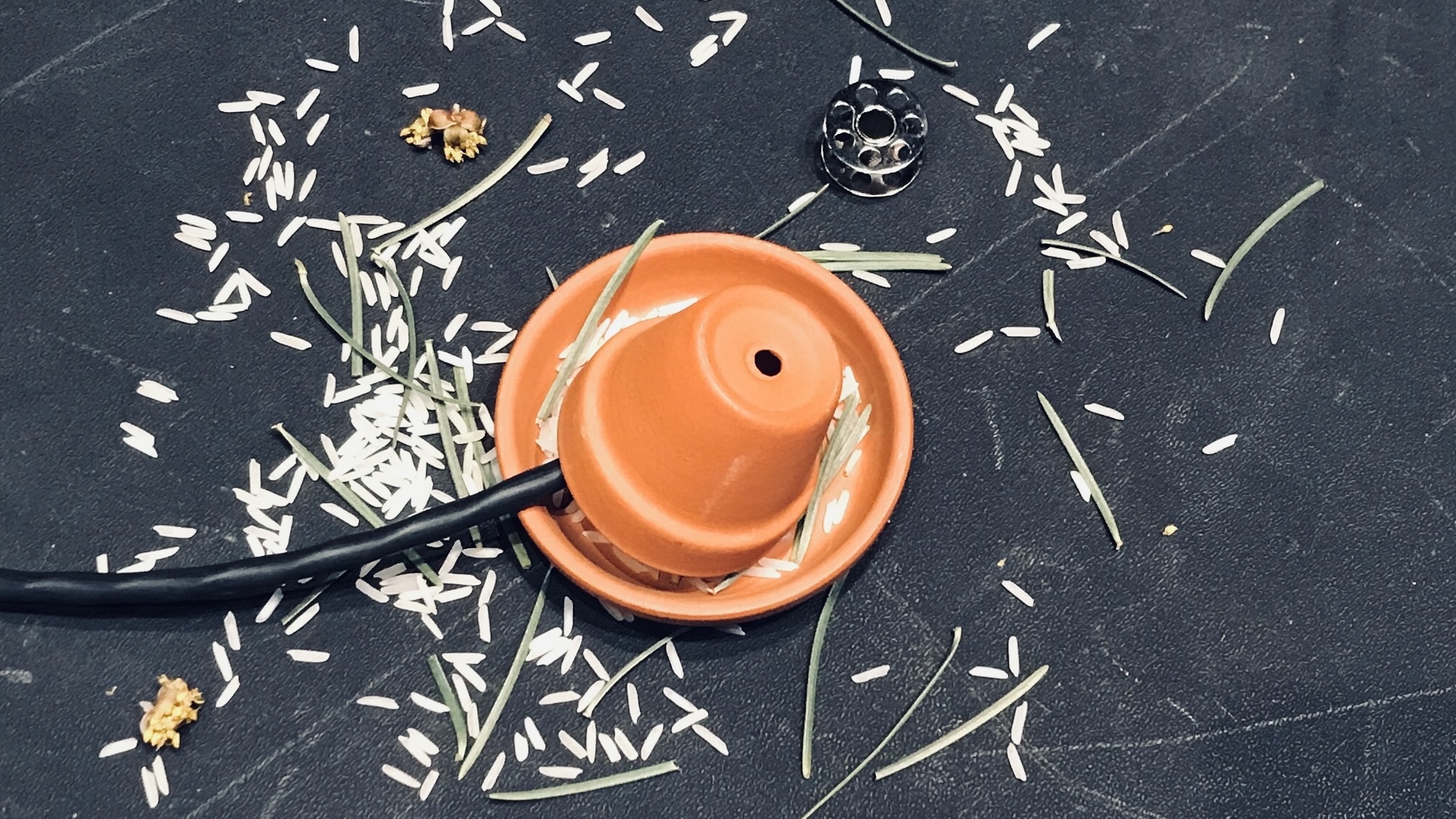
The thing is, I think–
A piece for solo performer with piano and field recordings, devised in collaboration with Joseph Houston.
Back to basics
Simple
Exercises
Learning
Relearning
Unlearning
Decolonising the mind
Processing
Commissioned by City Music Foundation.
Reviewed by Helen Wallace for theartsdesk.com:
'In Barnett-McIntosh’s The thing is, I think– the piano is an adversary whose historical baggage intimidates. To repetitive machine-noise and multiple voices, Houston walked around it, squared up to it, rubbed its gleaming surface till it squeaked, rattled its innards with a ruler before daring to touch it into frail song. Loaded phrases floated by, "only you can get yourself out of this": the act of composing itself under the microscope.'
Performed by Joseph Houston at Cafe OTO, for Kammer Klang, 13 January 2018, St John's Smith Square, 10 January 2018, and at Unerhoerte Musik, 12 December 2017.
Performed by Alex Raineri at Brisbane Music Festival’s ‘Crimson’ concert, 1 / 3 / 5 March 2021.
the various directions of should
group conversation, group reading. a new play? or, rehearsal of it, maybe.. a script, a score. written in the vernacular and performed verbatim. what modes of delivery of speech – mixing it up, talking over the top of each another, the natural turn-taking of chit-chat. speech part enunciated, part relaxed. sharing stories, a moment, our languages. told through our own voices speaking aloud.
 Pictured (L–R): Sara Cowdell, Elliot Vaughan, Annelies Mead, me, Marcus Jackson.
Pictured (L–R): Sara Cowdell, Elliot Vaughan, Annelies Mead, me, Marcus Jackson.Performed at MINTER, play_station, 4 May 2019.
